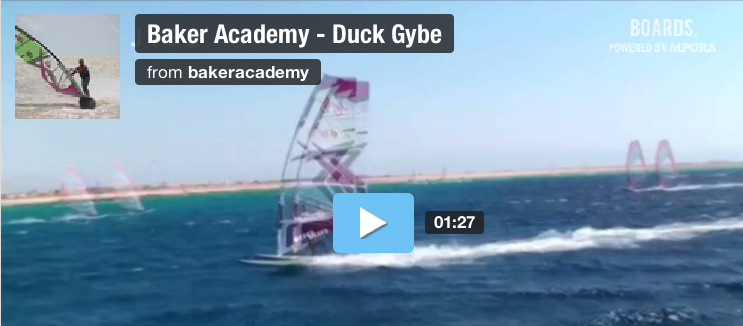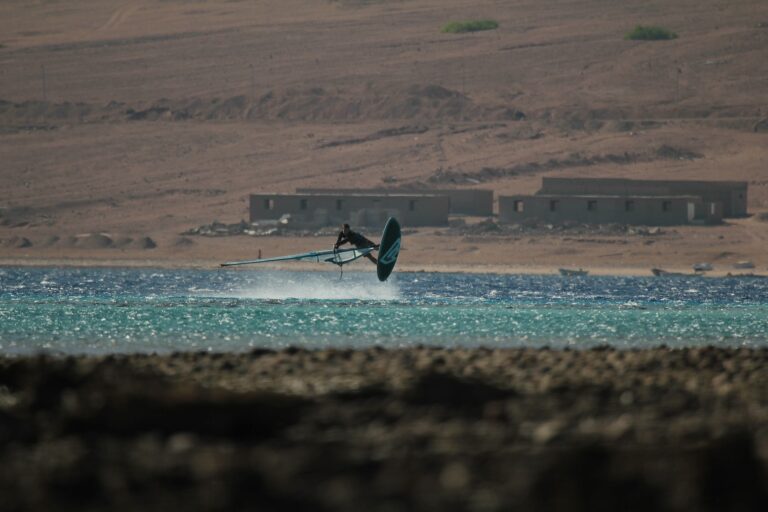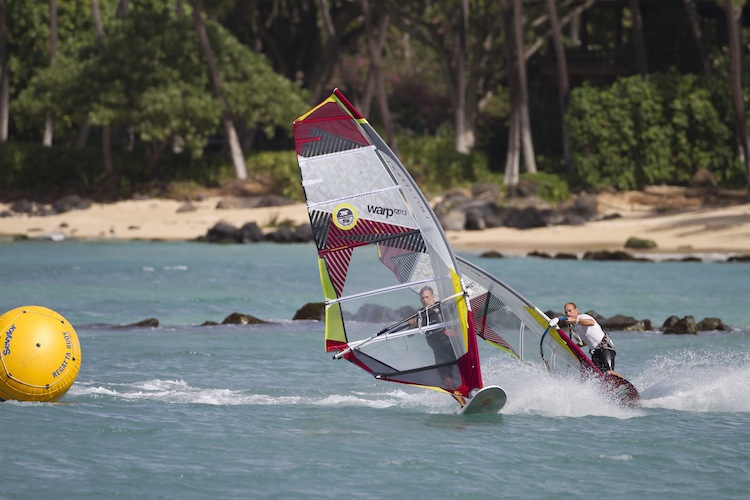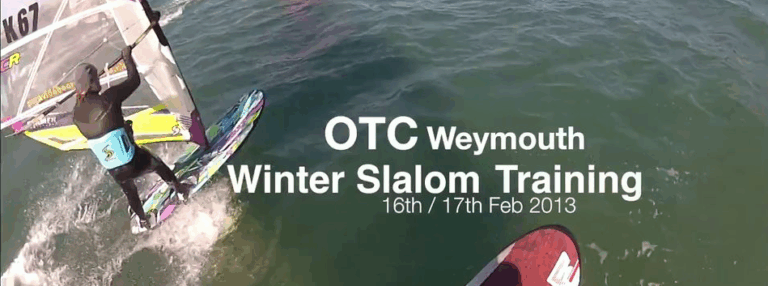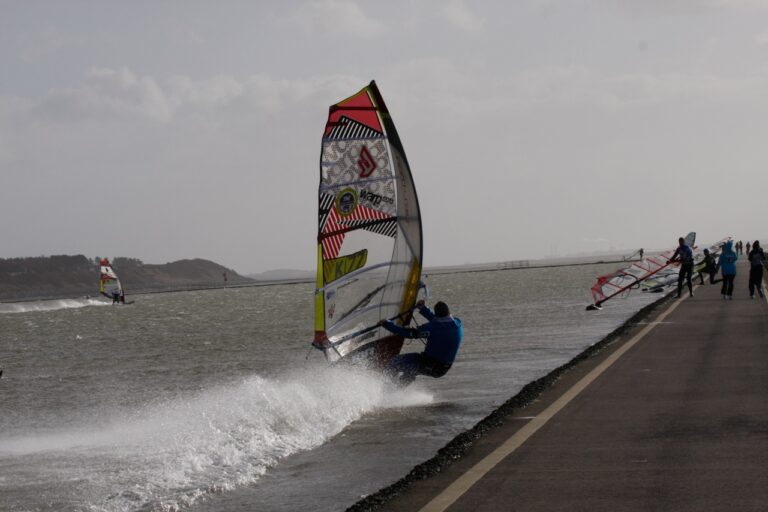NorthSails present their race winning slalom sails for 2013.
Sails designed to win PWA slalom races have different requirements in the different sizes:
1. Large sizes need to inflate very easily so that when you sheet in or pump the sails the power comes on instantly for immediate acceleration.
2. The smaller the sail the more focus is set on having the draft locked in (both horizontally and vertically) and the sail not moving around excessively.
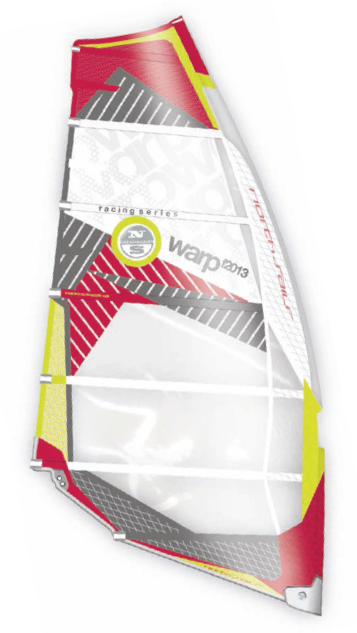
Usually sail designers tend to use the same design parameters (twist pattern, aspect ratio, sail foil tension) across the whole sail line. This results in some sizes being much more competitive than others. For example our last years’ 7.8 was perceived as the most competitive on the circuit. On the WARP F2013 Kai went one step further. He and his team checked the best sizes of all competitor sails and then went into individually adjusting the flexibility of each and every size. This we call SIZESPECIFIC.FLEXIBILITY.
In general you can say that the smaller sizes (up to 6.3) have a lower flexibility. This allows for the board and rig to be placed in the optimum trim for top-end speed (locked-in characteristic). You just keep on getting faster and faster the harder you sheet in and the stronger the wind gets.On the other hand the larger sizes have a higher flexibility. This improves the low-end acceleration as the deep profile pulls you onto a plane while the reactive top reacts as a “valve”. This higher flexibility also makes these sails much easier to pump. The outcome is simply amazing. The smaller sizes are even faster now. The biggest improvements though were made on the larger sizes. The 8.6 is the most competitive sail we’ve ever made in this size. It is much more flexible which makes it easier to accelerate and pump, yet the high-end control and v-max is on the same level than last year’s model.
The 9.4 got replaced by a 9.2 and a 9.6. This enabled Kai to individually design this biggest size of your quiver to the rider weights: riders below 90kg should take the 9.2 as their biggest sail as it still has an even better acceleration and low-end power than last year’s 9.4. The new 9.6 is designed for heavy and powerful riders above 90kg. It is the most powerful slalom sail we’ve ever built.
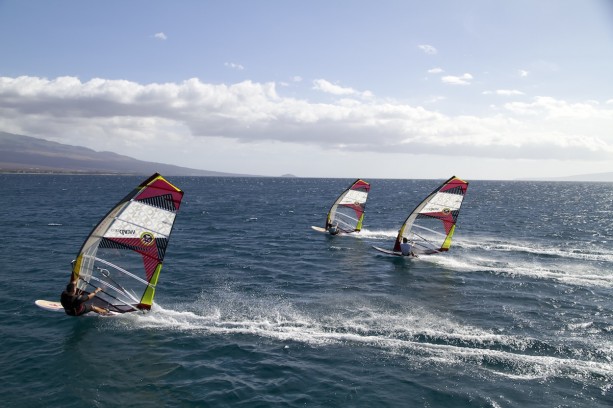
Key Features
[NEW] [01] SIZESPECIFIC.FLEXIBILITY Individually adjusted flexibility for each size to perfectly match the conditions and different rider weights.
[02] PRONOUNCED.PROFILE.DEPTH for advanced camber-rotation, deeper profile and more punch when accelerating, without compromising the handling
[03] Radical weight reduction thanks to the 7.BATTEN.DESIGN makes it the lightest racing film sail on the market
[04] MODERATE.CUTAWAY.CLEW Reduced “blow-out”effect for increased power and direct acceleration
[05] INSTANT.ROTATION Much faster acceleration after shifting through HYPER.CAMS and modified batten profiles
[06] Continued weight reduction due to minimalized MINI.PROTECTOR and super light iROCKET batten tensioners
[07] INDEPENDENT.SHAPING.CONCEPT improves rotation, control and acceleration
[08] TWIN.TRIM.CLEW allows for individual tuning increasing the range of use
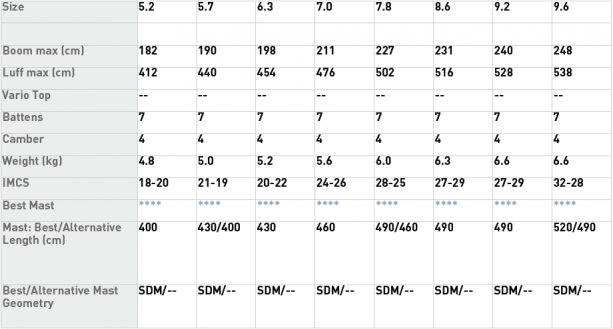
Kai Hopf:
“Across the board the sails have become softer. Biggest changes are in 8.6 and bigger with the addition of 9.2. The 9.2 was introduced as some of the team felt for their weight last years’ 9.4 was too big. By the time racing occurs with PWA wind minimums they were already overpowered. Goal with 8.6 and bigger was to drastically reduce the amount of force it would take to inflate the sails. This helps to improve the out-of-jibe performance and getting planing both static and by pumping. I believe we found the right compromise as going too soft makes the draft / center-ofeffort less defined. Key to performance sailing is being able to trim your equipment to the optimum position, having a rig where the center of effort is constantly shifting makes this task difficult. What we have achieved on 8.6 and bigger is that you can pump yourself on the plane in less wind then you can actually keep planing. The smaller sails get more emphasis on the center of effort being completely locked in making it even easier to find that optimum trim and holding it to continuously increase your speed.”
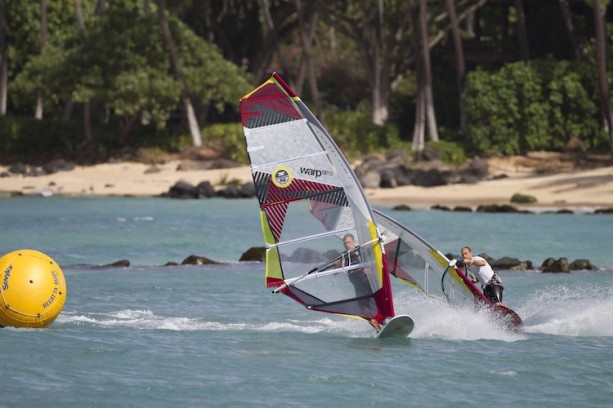
Peter Slate:
“When developing the Warp F2013, we focused on improving the perimeter tension in the smaller sizes (7.8m and down) and softening the bigger sizes (8.6m and up). In the smaller sizes, we achieved the our goal by reducing the luff curve in the top third of the sail, which improved the twist and keeps the fullness focused in the middle and bottom of the sail. In the bigger sails, we reduced the overall luff curve, and increased the negative shaping to double down on softening the sail.
Testing against our 2012 Warps and other competitor brands, we are very happy with the softness and increased ability to pump the bigger sails. The reduced luff curve and new shaping allows for a very stable sail that is fast and light in the hands.
We are very happy with the Warp F2013, and are confident you will be too.”
To find out more about the North Sails Warp check out their website here.

